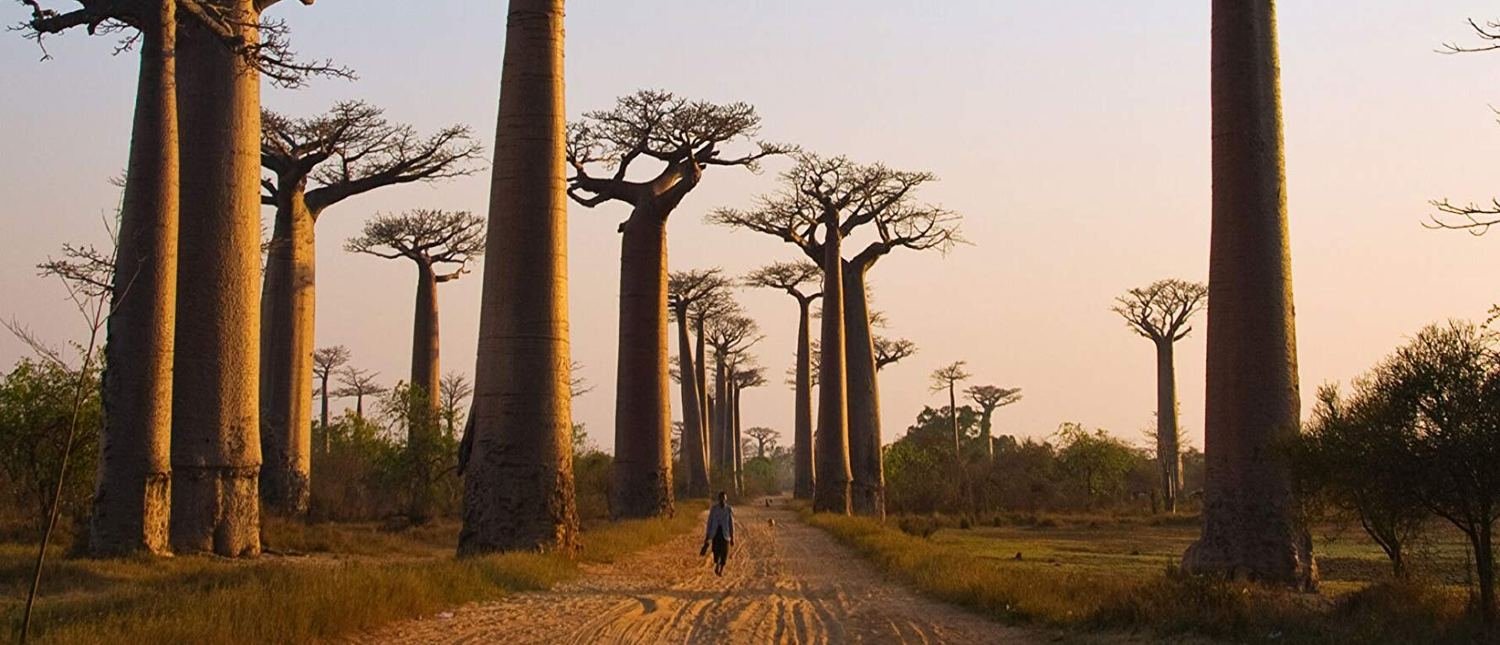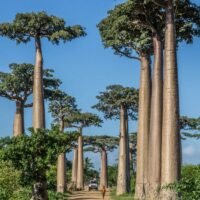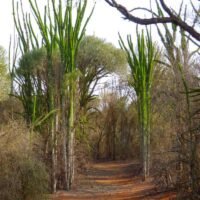Morondava is a quiet coastal town on Madagascar’s west coast, facing the Mozambique Channel. It’s best known for the surreal Avenue of the Baobabs and as a gateway to remote forests and wildlife reserves. The vibe is slow, hot, and unfiltered—one of those places where time feels stretched out. It’s not built up or packed with tourists, which is exactly why it’s worth visiting.
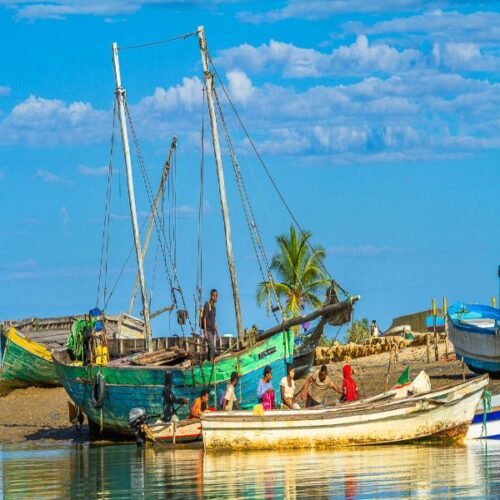
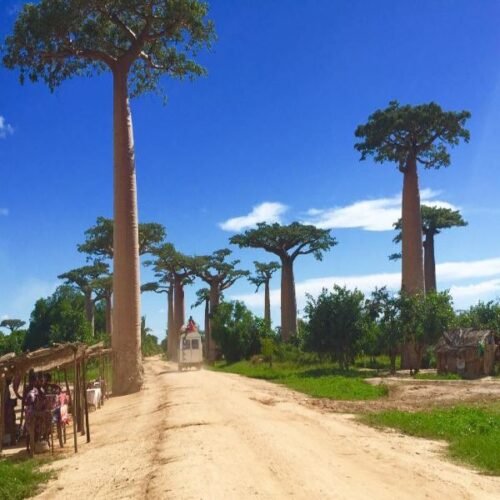
Brief History of Morondava
Morondava owes its name to the river that runs nearby—a river whose name has changed with the times. In 1623, Jesuit Father Luiz Mariano, part of a Portuguese expedition, discovered it and named it Manaputa. Later, in 1716, it became Morandavo, and by 1765, it was being referred to as Moranda or Mouroundave.
The area grew in importance during the era of the Menabe Kingdom, one of the most powerful Sakalava states on the island. From the 17th century onward, Morondava was a center for trade. Islamic merchants were active here, exchanging cotton and zebu skins for firearms and ammunition, goods that were in high demand by the local rulers.
In the 19th century, Morondava also became a stopover for slaves from the Makoa ethnic group, originally from Mozambique. These individuals were often brought to Morondava before being transported to the interior or southwest of Madagascar. It was a grim chapter in the region’s history, tied to the larger Indian Ocean slave trade.
By the early 20th century, Morondava had become a makeshift port. Large ships anchored offshore, about a mile out. Cargo had to be ferried in using wet or stranded schooners, which timed their entries with the tides. A natural lagoon acted as a basin, accessible to 20-ton sailboats at high tide. Though Morondava functioned as a commercial port, it never developed true port infrastructure—large vessels couldn’t dock directly, and all transfers had to happen by smaller boats navigating sandbanks and shifting tides.
This logistical quirk remains to this day: Morondava has always moved at its own pace, shaped by nature rather than infrastructure.
When to Go
Timing your visit to Morondava is essential. The weather plays a huge role in what you’ll be able to see and do.
-
Best Time: April through November. This is the dry season. Roads are passable, wildlife is active, and sunsets are sharp.
-
Worst Time: January to March. The rainy season can wash out roads and cause travel delays. Cyclones are also a risk.
-
Sweet Spots: April and November, on either end of peak tourist season, offer good weather with fewer crowds.
If your plans include forest reserves or long drives on dirt roads (and they probably will), avoid the rainy season. You’ll have a much smoother trip during the dry months.
What to See in Morondava
Despite its quiet profile, Morondava has some standout attractions. These aren’t theme-park spectacles—they’re raw, natural, and often one-of-a-kind.
1. Avenue of the Baobabs
This is the shot you’ve seen a hundred times—and it never gets old. Just outside town, the Avenue of the Baobabs is a straight red dirt road flanked by massive, centuries-old baobab trees. The tallest hit 30 meters. Some are more than 800 years old.
Go at sunset. The warm light makes the scene unforgettable. And try to get there early or stay late to avoid the crowd. The real magic is in the silence when it’s just you and the trees.
2. Baobab Amoureux (Lovers’ Baobabs)
A short drive from the Avenue, you’ll find two intertwined baobabs known as the “Lovers’ Baobabs.” Local legend says two lovers from rival clans died without being allowed to be together, and their spirits became these trees. It’s a quieter stop, but with just as much charm.
3. Kirindy Forest Reserve
About two hours north of Morondava lies Kirindy, a dry deciduous forest teeming with wildlife. It’s home to eight lemur species, giant jumping rats, snakes, chameleons, and most famously, the fossa, Madagascar’s top predator.
Go with a guide for a day hike or night walk. At night, the forest wakes up—tiny mouse lemurs dart around, and you’re more likely to hear than see some of the animals. It’s a must-do if you’re in Morondava.
4. Belo-sur-Mer
If you have time and a 4WD vehicle, head south to Belo-sur-Mer, a remote fishing village about 4–6 hours away. The road’s rough, but the payoff is real: white sand, turquoise water, and total peace. The village is also known for traditional boat-building, and you can sometimes see craftsmen working on wooden sailing ships right on the beach.
5. Explore Local Life
You don’t need an itinerary to enjoy Morondava. Just walk around. The local market offers fresh produce, grilled fish, and Malagasy street snacks. You’ll see pirogues pulled up on the beach, fishermen mending nets, and kids playing soccer in the sand.
Sunsets from the beach are worth slowing down for. Grab a local beer (THB is the standard) and settle in. It’s not a show. It’s just life, and it’s beautiful in its simplicity.
6. Cultural Traditions
If your visit coincides with a Sakalava festival or funeral ritual like the famadihana (turning of the bones), you may get a glimpse into traditional ancestor worship and community rituals. These events are deeply meaningful and not tourist attractions—always ask before photographing or participating.
Even outside major festivals, local fady (taboos) are important in daily life. Some areas or trees are sacred, and certain behaviors are prohibited. Having a local guide is helpful for navigating these customs respectfully.
7. Fishing and Boating
Since Morondava is right on the water, it’s easy to arrange a fishing trip or a pirogue ride along the coast or inland waterways. It’s not a polished tour experience—more like tagging along with locals who know the sea by heart. If you want to disconnect and see the land from the water, this is the way to do it.
Final Word
Morondava isn’t flashy, and that’s exactly its charm. It’s a place where ancient trees frame quiet sunsets, where history lives in local rituals and river names, and where the modern world hasn’t smoothed out the edges. It’s hot, dusty, peaceful—and worth every mile it takes to get there.
